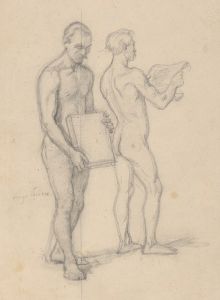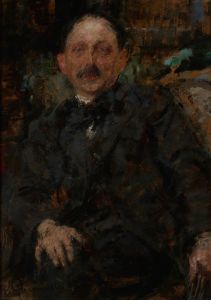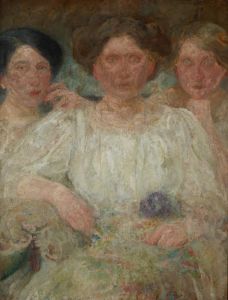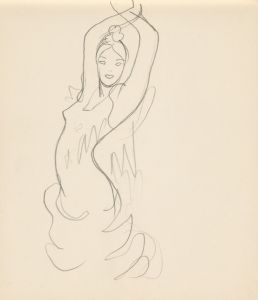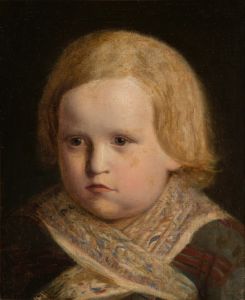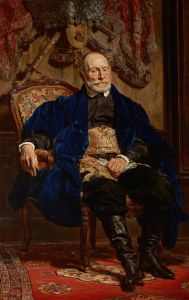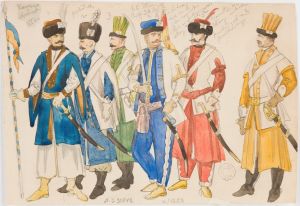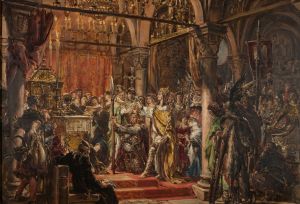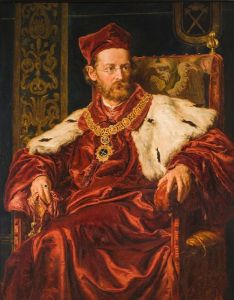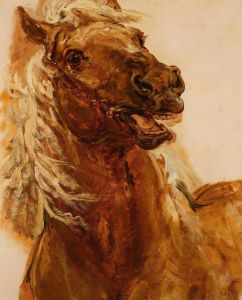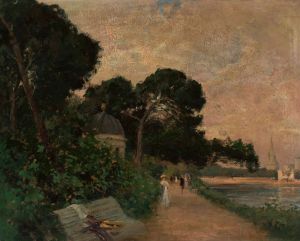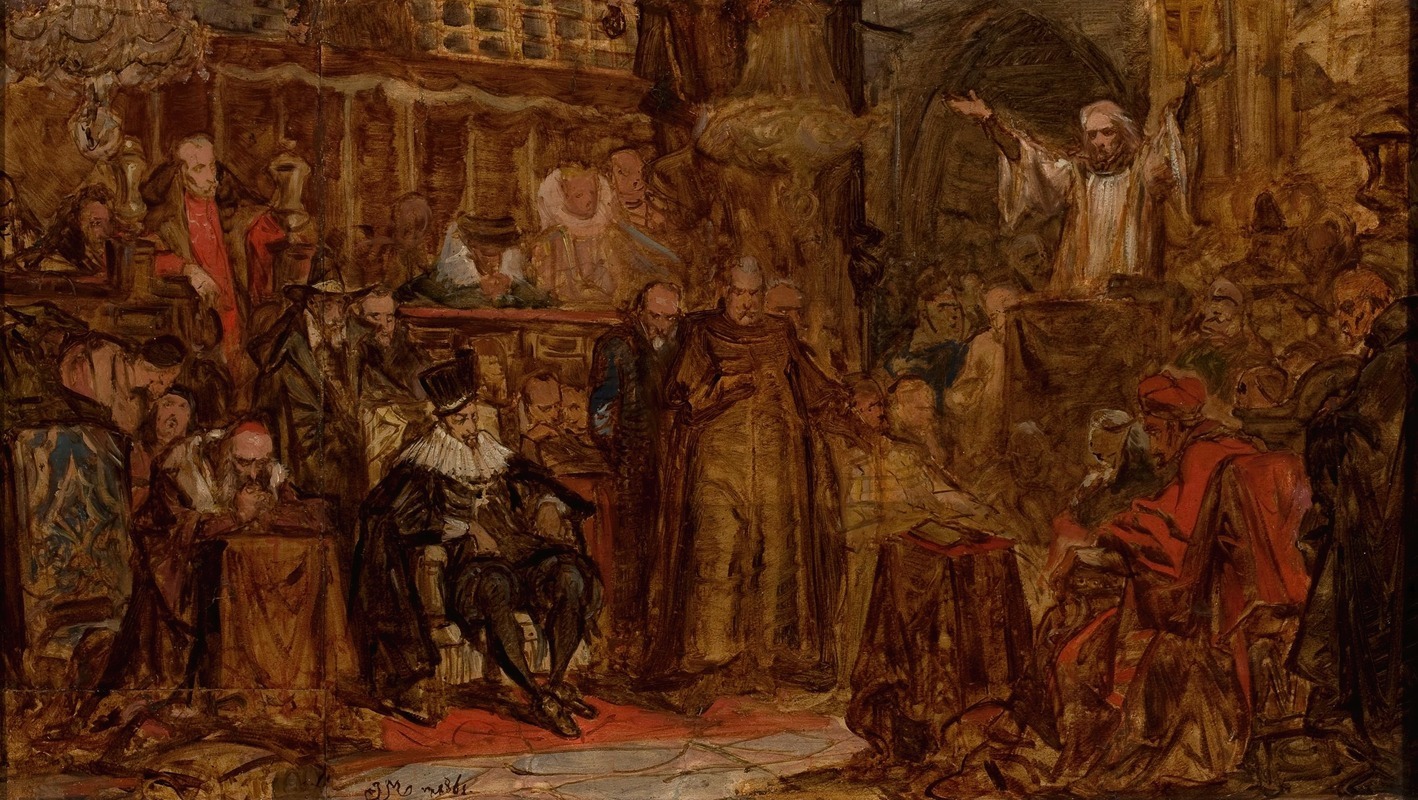
Sketch for “Skarga’s Sermon”
A hand-painted replica of Jan Matejko’s masterpiece Sketch for “Skarga’s Sermon”, meticulously crafted by professional artists to capture the true essence of the original. Each piece is created with museum-quality canvas and rare mineral pigments, carefully painted by experienced artists with delicate brushstrokes and rich, layered colors to perfectly recreate the texture of the original artwork. Unlike machine-printed reproductions, this hand-painted version brings the painting to life, infused with the artist’s emotions and skill in every stroke. Whether for personal collection or home decoration, it instantly elevates the artistic atmosphere of any space.
"Sketch for 'Skarga’s Sermon'" is a preparatory work by the renowned Polish painter Jan Matejko, created in 1864. Jan Matejko, born in 1838 in Kraków, was a prominent figure in Polish art, known for his historical paintings that often depicted significant events and figures from Polish history. His works are celebrated for their attention to detail, historical accuracy, and the ability to capture the essence of Polish national identity.
The sketch serves as a preliminary study for Matejko's larger painting, "Skarga’s Sermon," completed in 1864. The final painting is one of Matejko's most famous works and is housed in the Royal Castle in Warsaw. It portrays a scene from the late 16th century, featuring the Jesuit priest Piotr Skarga, who was a prominent figure in Poland during the Counter-Reformation. Skarga was known for his passionate sermons and his role as a royal preacher to King Sigismund III Vasa.
In "Skarga’s Sermon," Matejko captures a moment during one of Skarga's famous sermons, which were known for their fervent calls for moral and political reform in the Polish-Lithuanian Commonwealth. The painting depicts Skarga delivering a sermon to a group of Polish nobles and dignitaries, emphasizing themes of patriotism, unity, and the need for societal change. The work reflects Matejko's interest in Polish history and his desire to inspire a sense of national pride and reflection among his contemporaries.
The sketch itself provides insight into Matejko's creative process, showcasing his ability to compose complex scenes with multiple figures. It reveals his meticulous approach to planning the composition, arrangement of figures, and the overall narrative of the painting. Through the sketch, viewers can observe how Matejko experimented with different poses, expressions, and interactions among the characters to convey the emotional intensity of Skarga's sermon.
Matejko's work, including "Sketch for 'Skarga’s Sermon,'" is characterized by its rich detail and historical authenticity. He conducted extensive research to ensure the accuracy of the costumes, architecture, and other elements depicted in his paintings. This dedication to historical detail is evident in the sketch, where even the preliminary outlines suggest a careful consideration of the historical context.
"Sketch for 'Skarga’s Sermon'" is an important piece within Matejko's oeuvre, as it not only illustrates his artistic process but also highlights his commitment to portraying pivotal moments in Polish history. The sketch, like the final painting, serves as a reminder of the enduring impact of Skarga's sermons and their relevance to the political and social issues of Matejko's own time.
Jan Matejko's legacy as a painter is deeply intertwined with his role as a chronicler of Polish history. His works continue to be celebrated for their ability to evoke a sense of national identity and historical consciousness. "Sketch for 'Skarga’s Sermon'" remains a testament to Matejko's skill as an artist and his dedication to capturing the spirit of Poland's past.





